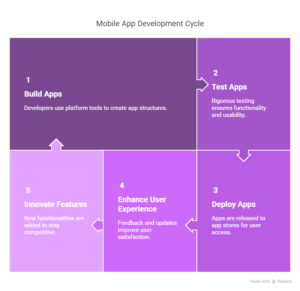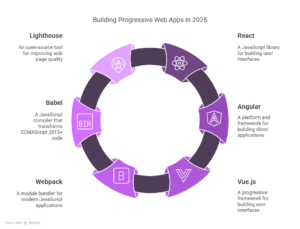How We Handle Remote Teams: A Comprehensive Approach to Managing and Supporting Remote Work Effectively
The rise of remote work has transformed the way businesses operate, offering flexibility, access to global talent, and cost savings. However, managing remote teams effectively requires a strategic approach that fosters collaboration, maintains productivity, and supports employee well-being. At [Your Company Name], we have developed a robust framework to ensure that our remote teams thrive. Here’s how we handle remote teams and create an environment where everyone can succeed.
1. Clear Communication and Expectations
Effective communication is the cornerstone of successful remote work. We prioritize transparency and clarity in all interactions to ensure that team members understand their roles, responsibilities, and goals.
Structured Communication Channels: We use tools like Slack, Microsoft Teams, or Zoom to facilitate real-time communication. Each channel is purpose-driven, whether it’s for project updates, casual conversations, or urgent matters.
Regular Check-Ins: Managers schedule weekly one-on-one meetings and team check-ins to discuss progress, address concerns, and provide feedback. This helps maintain alignment and keeps everyone on the same page.
Documentation: We maintain detailed documentation of processes, goals, and decisions in shared platforms like Google Drive or Notion. This ensures that information is accessible to everyone, regardless of time zones.
2. Leveraging Technology for Collaboration
Technology is the backbone of remote work. We invest in tools that enable seamless collaboration and productivity.
Project Management Tools: Platforms like Asana, Trello, or Monday.com help us track tasks, set deadlines, and monitor progress. These tools provide visibility into team workflows and ensure accountability.
Virtual Collaboration Spaces: Tools like Miro or Figma allow teams to brainstorm, design, and collaborate in real time, replicating the experience of in-person teamwork.
Time Zone Management: To accommodate global teams, we use tools like World Time Buddy to schedule meetings at convenient times and ensure no one is left out.
3. Building a Strong Remote Culture
A strong company culture is essential for remote teams to feel connected and engaged. We focus on fostering a sense of belonging and camaraderie, even when team members are miles apart.
Virtual Team-Building Activities: From online trivia nights to virtual coffee breaks, we organize regular activities to help team members bond and build relationships.
Recognition and Celebrations: We celebrate milestones, achievements, and birthdays through virtual shout-outs, gift cards, or team-wide announcements. Recognizing contributions boosts morale and motivation.
Inclusive Communication: We ensure that all team members, regardless of location, feel included in decision-making and company updates. Regular all-hands meetings and newsletters keep everyone informed and engaged.
4. Prioritizing Employee Well-Being
Remote work can blur the lines between professional and personal life, leading to burnout. We are committed to supporting the mental and physical well-being of our team members.
Flexible Work Hours: We encourage employees to work during their most productive hours, as long as they meet deadlines and attend key meetings. This flexibility helps them balance work and personal commitments.
Mental Health Support: We provide access to mental health resources, such as counseling services or mindfulness apps, and encourage open conversations about well-being.
Encouraging Breaks: Managers remind team members to take regular breaks and use their vacation days. We also promote initiatives like “no-meeting Fridays” to reduce screen fatigue.
5. Empowering Managers to Lead Remotely
Managing remote teams requires a different skill set than traditional in-person management. We equip our managers with the tools and training they need to lead effectively.
Leadership Training: We offer workshops on remote leadership, focusing on skills like active listening, empathy, and fostering trust in virtual environments.
Goal-Oriented Management: Managers set clear, measurable goals and focus on outcomes rather than micromanaging. This empowers employees to take ownership of their work.
Open-Door Policy: Managers maintain an open-door (or open-inbox) policy, encouraging team members to share concerns or ideas at any time.
6. Continuous Feedback and Improvement
Remote work is an evolving landscape, and we are committed to continuously improving our approach based on feedback and best practices.
Employee Surveys: We regularly survey our team members to gather feedback on remote work policies, tools, and support systems. This helps us identify areas for improvement.
Iterative Processes: We treat remote work as an ongoing experiment, testing new tools, policies, and practices to see what works best for our team.
Learning from Others: We stay informed about industry trends and learn from other companies’ successes and challenges in managing remote teams.
7. Security and Data Protection
With remote work, ensuring the security of company data is paramount. We implement robust measures to protect sensitive information and maintain compliance.
Secure Tools and Platforms: We use encrypted communication tools and VPNs to safeguard data.
Training on Cybersecurity: Employees receive regular training on best practices for data protection, such as recognizing phishing attempts and using strong passwords.
Clear Policies: We have clear guidelines on data handling and device usage to minimize risks.
Conclusion
Managing remote teams effectively requires a combination of clear communication, the right tools, a strong culture, and a focus on well-being. At [Your Company Name], we are committed to creating an environment where remote teams can thrive, innovate, and achieve their full potential. By embracing flexibility, fostering connection, and continuously improving our processes, we ensure that our remote work model is not just sustainable but also a source of competitive advantage.
Remote work is here to stay, and we are dedicated to making it work for everyone—employees, managers, and the organization as a whole. Together, we are redefining the future of work.





